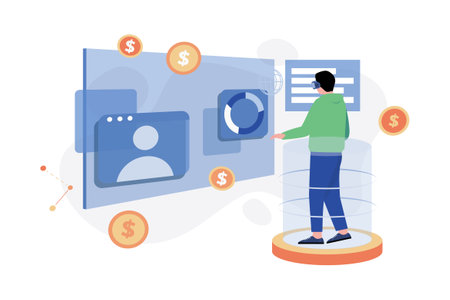1. Assessing Your Current Credit Card Situation
If you want to tackle your credit card debt, the first step is getting a clear, honest look at where you stand. This means taking inventory of every credit card you have, what you owe, your interest rates, and your minimum payments. Don’t worry—this isn’t about judging yourself; it’s just about understanding your starting point so you can make a smart plan.
Gather Your Credit Card Information
Start by collecting all your latest credit card statements or logging into your online accounts. You’ll want to find:
- The current balance on each card
- The annual percentage rate (APR) for each card
- The minimum monthly payment required
- The payment due date
Create a Simple Debt Snapshot Table
Organizing everything in one place helps you see the big picture. Here’s a sample table you can use:
| Credit Card Name | Current Balance | Interest Rate (APR) | Minimum Payment | Due Date |
|---|---|---|---|---|
| Visa Rewards | $2,500 | 21% | $60 | 15th of each month |
| Mastercard Platinum | $1,200 | 18% | $35 | 10th of each month |
| Store Credit Card | $800 | 25% | $30 | 5th of each month |
Total Monthly Minimum Payments and Obligations
Add up all your minimum payments—this number is important because it tells you the least amount you must pay every month to avoid late fees and extra interest charges. Don’t forget to include other monthly financial obligations like rent, utilities, and groceries so you know how much room you have in your budget.
Your Next Step: Know Where You Stand
This simple assessment gives you a full view of your credit card situation. Once everything is laid out clearly, you’ll be in a much better position to make decisions about how to pay down your debt faster and save money on interest along the way.
2. Setting Realistic Debt Reduction Goals
Before you can start tackling your credit card debt, it’s important to set goals that are not only realistic but also tailored to your lifestyle and financial situation. Here’s how you can establish achievable targets for paying off your credit cards while keeping yourself motivated along the way.
Understanding Your Starting Point
Begin by gathering all your credit card statements and noting down your balances, interest rates, and minimum payments. This will help you get a clear picture of where you stand and what needs to be addressed first.
| Credit Card | Balance | Interest Rate | Minimum Payment |
|---|---|---|---|
| Card A | $3,500 | 18% | $70 |
| Card B | $1,200 | 24% | $30 |
| Card C | $600 | 15% | $20 |
Setting Specific and Measurable Goals
Your goal should be clear and trackable. For example, “I want to pay off $5,000 in credit card debt within 18 months” is much more effective than just saying “I want to pay off my debt.” Break your main goal into smaller milestones, such as paying off one card at a time or reducing total debt by a certain amount each month.
Sample Timeline Table for Debt Payoff
| Milestone | Target Date | Status (to update) |
|---|---|---|
| Pay off Card C ($600) | 3 months from now | |
| Pay off Card B ($1,200) | 8 months from now | |
| Reduce Card A to $1,500 balance | 12 months from now | |
| Total debt below $1,000 | 18 months from now |
Staying Motivated With Visual Progress and Rewards
A great way to stay on track is to visualize your progress. Use a spreadsheet, an app, or even a simple chart on your fridge that shows how much you’ve paid down each month. Set up small rewards when you hit milestones—like treating yourself to a favorite coffee shop after paying off a card—to keep your motivation high.
Tying Goals to Your Lifestyle Needs
Your debt reduction plan should fit into your everyday life. Consider how much extra cash you can realistically put toward debt without sacrificing essentials like rent or groceries. If your budget is tight, even small consistent payments make a difference over time—consistency is key!
![]()
3. Choosing the Right Debt Payoff Strategy
When it comes to tackling credit card debt, there’s no one-size-fits-all solution. The best strategy for you depends on your spending habits, personality, and financial goals. Two of the most popular methods in the U.S. are the Debt Snowball and Debt Avalanche. Let’s explore how each works so you can find what fits you best.
Debt Snowball Method
The Debt Snowball approach is all about building momentum and motivation. With this method, you focus on paying off your smallest credit card balance first while making minimum payments on your other cards. Once that smallest debt is paid off, you move to the next smallest, and so on. This method is great if you need quick wins to stay motivated.
How It Works:
| Step | Description |
|---|---|
| 1 | List all your credit card debts from smallest to largest balance. |
| 2 | Make minimum payments on all debts except the smallest. |
| 3 | Put any extra money toward the smallest debt until its paid off. |
| 4 | Repeat the process with the next smallest debt. |
Debt Avalanche Method
The Debt Avalanche focuses on saving money on interest. You start by paying off the debt with the highest interest rate first, while making minimum payments on others. This method reduces the total amount of interest you pay over time, which can help you get out of debt faster if you stick to it.
How It Works:
| Step | Description |
|---|---|
| 1 | List all your credit card debts from highest to lowest interest rate. |
| 2 | Make minimum payments on all debts except the one with the highest rate. |
| 3 | Put any extra money toward the debt with the highest interest until its paid off. |
| 4 | Move to the next highest-rate debt and repeat. |
Which Strategy Fits You?
The right method depends on what keeps you motivated and your financial priorities. If celebrating small wins helps you stay on track, the Snowball may be perfect for you. If saving money on interest is your top concern, Avalanche might be better. Here’s a quick comparison:
| Debt Snowball | Debt Avalanche | |
|---|---|---|
| Main Focus | Pays off smallest balances first for quick wins | Pays off highest-interest debts first to save money |
| Mental Boost? | Yes—motivating progress early on | No immediate wins, but saves more in long run |
| Saves More Money? | No—not focused on interest rates | Yes—reduces total interest paid |
TIPS FOR CHOOSING YOUR STRATEGY:
- If motivation is hard for you, try Snowball.
- If high interest rates stress you out, go Avalanche.
- You can always switch methods as your situation changes!
Selecting a strategy that matches your personality and lifestyle will make sticking with your plan much easier as you work toward a debt-free future.
4. Building and Sticking to Your Monthly Budget
Step-by-Step Guidance for Creating a Practical Budget
To effectively reduce your credit card debt, having a solid monthly budget is crucial. A clear plan helps you see where your money goes and find opportunities to free up extra cash for debt payments. Here’s a simple approach to building your budget:
1. List Your Income
Start by writing down all sources of monthly income. Include your main paycheck, side gigs, or any other money you regularly receive.
2. Track Your Expenses
Record all your monthly expenses. Use bank statements, receipts, or budgeting apps to help you remember everything—no expense is too small.
| Common American Expenses | Estimated Monthly Amount |
|---|---|
| Rent/Mortgage | $1,200 – $2,500 |
| Utilities (electricity, water, gas) | $150 – $300 |
| Groceries | $400 – $800 |
| Transportation (gas, car payment, insurance) | $250 – $600 |
| Cell Phone & Internet | $100 – $200 |
| Health Insurance & Medical | $200 – $400 |
| Subscriptions (Netflix, Spotify, etc.) | $20 – $60 |
| Dining Out & Coffee Shops | $100 – $300 |
| Minimum Credit Card Payments | (Varies) |
| Other Personal Expenses | (Varies) |
3. Identify Areas to Cut Costs
Now look at your spending and decide what’s necessary and what isn’t. Common areas where Americans often cut back include:
- Cancelling unused subscriptions or streaming services.
- Packing lunches instead of eating out.
- Choosing generic brands at the grocery store.
- Carpooling or using public transit to save on gas.
- Lowering your thermostat in winter or raising it in summer to save on utilities.
- Shopping sales and using coupons.
4. Set Spending Limits and Prioritize Debt Payments
Create realistic spending limits for each category based on your income and essential needs. Allocate as much as possible toward extra credit card payments after covering essentials.
| Category | Your Limit ($) |
|---|---|
| Essentials (rent, food, transportation) | [Enter Amount] |
| Savings/Emergency Fund | [Enter Amount] |
| Minimum Debt Payments | [Enter Amount] |
| Extra Credit Card Payment | [Enter Amount] |
| Lifestyle/Fun Money | [Enter Amount] |
5. Stick to Your Plan—and Track Progress Each Month!
The key to success is consistency. Use a budgeting app or a simple spreadsheet to track spending weekly. If you overspend in one area, adjust next month’s budget or cut back elsewhere so you can keep making those extra payments toward your credit card debt.
5. Tracking Progress and Adjusting Your Plan
Once you’ve set your credit card debt reduction plan in motion, it’s crucial to keep an eye on your progress. Regular tracking not only helps you stay motivated, but also lets you see what’s working and what needs tweaking. Here’s how you can make monitoring your journey simple and effective.
Why Regular Monitoring Matters
Just like checking your GPS during a road trip, keeping tabs on your debt payoff keeps you from getting lost or stuck. Regular check-ins help you:
- Spot areas where you’re making great progress
- Notice if you’re falling behind or facing new challenges
- Stay accountable to yourself and your goals
How to Track Your Progress
You don’t need fancy tools to track your journey—simple methods can work wonders! Consider using a spreadsheet, a notebook, or free budgeting apps available in the US. Here’s a sample table to help you visualize your monthly progress:
| Month | Total Credit Card Balance | Payment Made | New Purchases (if any) | Balance After Payment |
|---|---|---|---|---|
| January | $5,000 | $500 | $0 | $4,500 |
| February | $4,500 | $600 | $50 | $3,950 |
| March | $3,950 | $700 | $0 | $3,250 |
Celebreate Your Wins!
No matter how small, every step forward is worth celebrating. Did you pay off a whole card? Treat yourself to a favorite meal at home or enjoy a movie night with friends—just keep it budget-friendly! Recognizing these milestones keeps spirits high and momentum strong.
Making Adjustments When Needed
If you notice that progress is slowing down—maybe because of unexpected expenses or changes in income—it’s totally normal. The key is to adjust your plan without giving up. Here are some ways to adapt:
- Review your budget: See if there are areas where you can cut back temporarily.
- Increase payments when possible: Even small increases help over time.
- Avoid new credit card purchases: Try using cash or debit instead.
- Look for extra income: Side gigs like dog walking or tutoring can make a difference.
Your Journey, Your Pace
Remember, eliminating credit card debt isn’t always a straight line. Life happens! What matters most is sticking with it and adjusting as needed. By tracking your progress and making smart tweaks along the way, you’ll stay motivated and keep moving closer to financial freedom.


